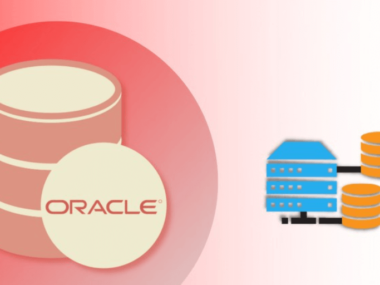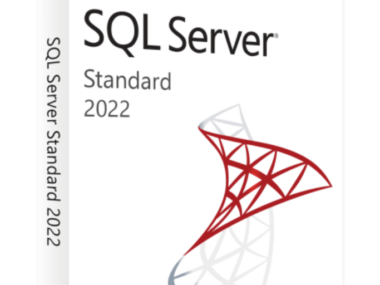Encryption methods for database security include transparent data encryption (TDE) and column-level encryption. These techniques safeguard sensitive information against unauthorized access.
Also Read
TDE offers file-level encryption. It is easy to implement without altering existing applications. Column-level encryption provides granular control. It allows the encryption of specific data within a table. This is crucial for maintaining the confidentiality of selected information.
Database security is critical. It protects sensitive data from cyber threats and unauthorized users. With cyberattacks on the rise, businesses and organizations prioritize securing their databases. Two popular encryption methods are TDE and column-level encryption. They play a major role in comprehensive data security strategies. If you need any good software. Click here.
Implementing proper encryption is not just a technical necessity. It’s also a legal imperative. This ensures compliance with data protection regulations and builds trust with customers. Customers are increasingly concerned about privacy.

Credit: www.linkedin.com
The Role Of Encryption In Database Security
We cannot understate the role of encryption in database security. It serves as a stronghold for protecting critical data from unauthorized access. Encryption converts information into an unreadable format. Even if accessed by intruders, it ensures that sensitive content remains shielded.
Protecting Sensitive Information
Encryption acts as a guardian for personal, financial, and confidential information. Databases contain it. Algorithms scramble the data. Only those with the correct key can unlock and read it.
- Key Management: The process of creating, distributing, and maintaining encryption keys.
- Transparent Data Encryption (TDE): An encryption method that performs real-time I/O encryption and decryption of data and log files.
- Column-level Encryption: Targets specific columns in a database for encryption, ideal for particularly sensitive information.
Mitigating Data Breach Risks
When data breaches occur, unencrypted information can fall into the wrong hands. With strong encryption, the data remains indecipherable, severely limiting the damage.
| Encryption Type | Risk Mitigation | Use Case |
|---|---|---|
| Full Database Encryption | Secures all data within the database | Whole databases with mixed data types |
| Application-level Encryption | Protects sensitive data from application vulnerabilities | Applications handling high-value transactions |

Credit: www.scmagazine.com
Symmetric Vs Asymmetric Encryption
When it comes to database security, encryption is a shield against prying eyes. Two star players in this domain are symmetric and asymmetric encryption. Someone with the right key opens these methods, which pack data in a secure wrapper. If you need any good software. Click here.
Understanding Symmetric Encryption
Symmetric encryption uses a single key to lock and unlock data. Think of it like a secure box with a key that both the sender and receiver have copies of. This method is fast and simple, ideal for large sets of data.
- Single Key: One key does it all, encrypting and decrypting.
- Speed: Less complex, so it works swiftly.
- Best for: Internal systems where speed is key.
| Pros | Cons |
|---|---|
| Fast processing | Key distribution can be risky |
| Suitable for large volumes of data | Less versatile than asymmetric encryption |
Exploring Asymmetric Encryption Methods
Asymmetric encryption is like a mailbox with a public slot and a private key. Anyone can send a letter, but only the owner can open it. It uses two keys – one public, one private – enhancing security.
- Two Keys: Public key encrypts, private key decrypts.
- Public Access: The public key is shared freely.
- Private Safeguard: The private key must stay secret.
| Perks | Drawbacks |
|---|---|
| Highly secure | Slower than symmetric |
| No need to share private keys | Complex management |
Both methods work together for robust database armor. Symmetric can handle the heavy lifting, while asymmetric keeps keys safe. By using both, databases stay locked tight against unauthorized access.
Advanced Encryption Standard (aes)
The Advanced Encryption Standard (AES) stands as a fortress in database security. This powerful encryption method guards sensitive data against unauthorized access. AES is a symmetric encryption algorithm. It scrambles data so that only someone with the right key can unlock it. This security is pivotal for modern data protection standards.
Aes In Modern Databases
AES is the go-to encryption for many databases today. Its robustness makes it suitable for government documents and private data alike. It uses blocks of 128, 192, or 256 bits and a key of identical size to secure data. Let’s see how AES operates within modern databases:
- Encryption at rest: AES safeguards data when it’s stored, not just when it’s sent or received.
- Speed and efficiency: AES works quickly, encrypting data without slowing down systems.
- Compliance-ready: AES meets various compliance requirements, ensuring data protection laws are followed.
Key Management And Best Practices
Key management remains critical in AES implementation. A robust key lifecycle policy is necessary:
- Generation: Create strong, random keys through secure procedures.
- Storage: Store keys separately from the data they protect.
- Rotation: Regularly change keys to minimize risk.
- Destruction: Safely discard old keys to prevent misuse.
Follow these best practices for optimal AES usage:
- Use the longest key length permissible for maximum security.
- Regularly update and patch your encryption software.
- Conduct periodic security audits on your encryption ecosystem.
Public Key Infrastructure (pki) And Database Protection
Public Key Infrastructure (PKI) stands as a fortress in database security. It uses two keys: a public key anyone can see, and a private key known only to the owner. These keys create a secure environment for data in databases. If you need any good software. Click here.
Understanding and implementing PKI can make databases tough to crack. It acts like a hidden shield for sensitive information. Let’s explore how PKI operates and how database systems can deploy it.
Essentials Of Pki
PKI builds trust in digital transactions. It includes these key elements:
- Certification Authority (CA): This is a trusted third party. It issues and verifies digital certificates.
- Registration Authority (RA): Works closely with CA. It verifies user identities before certificate issuance.
- Digital Certificates: These tie public keys to individuals. They confirm you are communicating with the right entity.
- Keys: A matched public and private key pair. They encrypt and decrypt data.
Together, these components create secure paths for data to travel within databases.
Deploying Pki In Database Systems
Securing a database with PKI involves several steps:
- Install and configure CA: Set up a certification authority or choose a public one.
- Generate key pairs: Create a public and private key for each user or system component.
- Issue certificates: The CA issues a certificate signing request (CSR) which is then signed to become a digital certificate.
- Enforce policies: Define who and what can access or modify the database.
- Monitor and manage: Regularly check certificate statuses and revoke if necessary.
Proper PKI deployment ensures each data exchange is encrypted. It creates a secure channel that turns away intruders.
Database Encryption Techniques And Performance
Database encryption plays a crucial role in safeguarding sensitive information.
Employing robust encryption methods is paramount for protecting data from unauthorized access.
But it’s equally important to ensure that the encryption doesn’t hinder database performance.
This delicate balance of security and speed demands a strategic approach to database encryption.
Balancing Security And Efficiency
Efficiency and security are two sides of the database coin.
While strong encryption algorithms improve security, they may impact speed. Optimal performance requires a choice of
encryption techniques that complement your database’s workload without adding unnecessary overhead.
- Symmetric encryption for faster operation
- Asymmetric encryption for stringent security
- Use of hardware acceleration to speed up processes
- Choosing the right encryption level to balance needs
Impact On Database Operations
Introducing encryption affects various database operations. Query performance, backup times, and
overall user experience can bear the weight of poorly implemented encryption.
| Operation | Without Encryption | With Encryption |
|---|---|---|
| Query Time | Fast | Varies |
| Backup Duration | Shorter | Longer |
| Recovery Speed | Swift | Depends on keys |
To minimize performance degradation, businesses implement selective encryption on critical data sets,
leaving less sensitive data in clear text.

Credit: www2.deloitte.com
Encryption Governance And Compliance
Keeping data secure is critical for every organization. Encryption methods play a vital role in safeguarding database security. It’s not just about encrypting data. It’s also about managing encryption properly and complying with legal requirements. If you need any good software. Click here.
In this section, we’ll explore the importance of encryption governance. We’ll also discuss the need to comply with data protection standards.
Adhering To Data Protection Standards
Encryption governance begins with understanding data protection standards. Organizations must comply with regulations like GDPR, HIPAA, and PCI DSS. Each standard has specific requirements for encrypting sensitive information.
These standards aim to ensure that all personal and financial data remains confidential. They also aim to ensure that the data remains intact. They reduce the risks of data breaches.
To adhere to these standards, organizations should implement the following measures:
- Regular updates to encryption algorithms
- Strong access controls to protect encryption keys
- Use of industry-recognized encryption techniques
- Employee training on data security protocols
Audit And Compliance Considerations
Audit trails and compliance reports are essential for encryption governance. They prove an organization’s commitment to protecting sensitive data. Regular audits highlight potential vulnerabilities and enforce the consistent use of encryption protocols.
Consider these critical areas for audit and compliance:
| Area | Consideration |
|---|---|
| Key Management | Audit who accesses encryption keys and when |
| Policy Enforcement | Ensure policies are followed through regular checks |
| Change Management | Verify that any changes follow security protocols |
| Risk Assessment | Continually assess for new threats |
Failure to comply can result in hefty fines, reputation damage, and loss of customer trust. Therefore, consistent encryption governance and ongoing compliance are non-negotiable for database security.
Frequently Asked Questions For Encryption Methods For Database Security?
What Are The 3 Common Database Encryption Methods?
Three common database encryption methods are Transparent Data Encryption (TDE), Column-level Encryption, and File-level Encryption. Each provides different security levels to safeguard sensitive information.
What Are The 4 Types Of Encryption?
There are four types of encryption. They are symmetric key, asymmetric key, hashing, and key exchange algorithms. Each method secures data uniquely for various applications.
What Are The Three 3 Different Encryption Methods?
The three main encryption methods are symmetric-key, asymmetric-key, and hashing. Each method secures data uniquely to protect information during transmission.
How Can You Encrypt The Database For Security?
To encrypt a database, use built-in encryption features like TDE (Transparent Data Encryption). Alternatively, apply third-party encryption tools. Regularly update and manage encryption keys for optimal security.
Conclusion
To wrap up, securing databases is crucial for protecting sensitive information. Employing robust encryption methods is a vital step. Whether through AES, Blowfish, or RSA, each technique has its strengths. Prioritize data safety to safeguard against breaches. Stay informed, stay secure.












